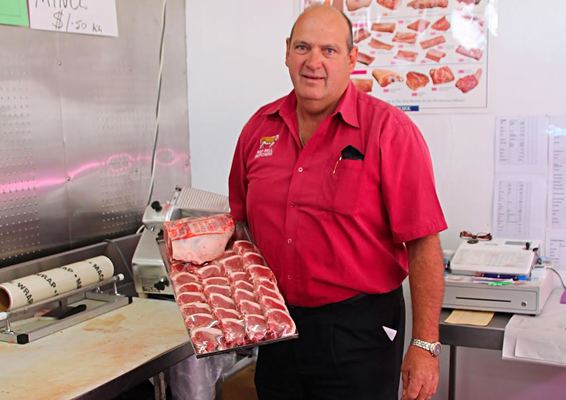
By SONJA KOREMANS
BOOMING international demand for Aussie lamb is driving up the price of our favourite meat.
That’s good news for farmers, but does it mean budget shoppers need to give lamb the chop?
Some butchers in capital cities this week are charging up to $60 a kilogram for cutlets, and the Australian Bureau of Statistics estimates that lamb could reach $100 a kilogram by next year in some outlets.
Southern Free Times spoke with local butchers to see what it means for shoppers in the region.
While butchers are paying more for lamb at Darling Downs saleyards – $160 up from $120 in January – most said they aren’t passing on the price rise.
“I’d rather wear the price rise and let it settle down for a few weeks,” said Ross Bell from R&P Bell Butchers in Warwick.
“You just wouldn’t have captive market in the country if you charged the sort of prices for lamb that you see in some Brisbane stores,“ he said.
Other butchers that Southern Free Times spoke with in Warwick this week said they weren’t passing on the increase either.
Mr Bell said top end lamb predominantly sold at quality butcher shops was less volatile in price than second-grade meat, regardless of the cut.
Local meat traders said lamb price increases were more evident in supermarkets as most major chains sold a mix of both high and second-grade meat.
Meat and Livestock Australia this week said the lower Aussie dollar, tighter New Zealand production and continued global demand was likely to push sheep and lamb prices higher over the next few months.
Prices are being driven higher by a growing appetite for Aussie lamb in the the US, China and the Middle East, the MLA said.
Breakout box
CUTS FOR THRIFTY SHOPPERS
MANY inexpensive lamb cuts require slow cooking to make them tender, but this means they impart their unique flavour.
Shoulder:
This large cut makes a cheap alternative to leg. Roast whole joints studded with herbs, garlic and anchovies. Alternatively you can cut it into chunks and cook slowly in a stew.
Chump:
A neat juicy lamb cut. Try grilling, roasting or pan-frying the steaks, with or without the bone intact.
Breast:
A cut taken from the underbelly of the lamb, cook this piece very slowly to render away the fat.
Stew meat:
You can make rich stews using pieces cut from almost any part of a lamb. Butchers recommend stew meat from the shoulder, as it becomes tender during stewing and braising.
Shanks:
The shank is the muscular bottom portion of the leg. It is the ultimate cut for slow braises that require rich, intense flavour. Long cooking causes the connective tissue to break down and yields succulent, fork-tender pieces.
Neck slices:
Typically sold as thick, bone-in slices, lamb neck is inexpensive and full of flavor. Like oxtail, neck meat lends a silky richness to stews, braises and other slow-cooked dishes.
Lamb mince:
Easy to prepare and full of flavour in everything from spicy koftas to shepherd’s pie.






